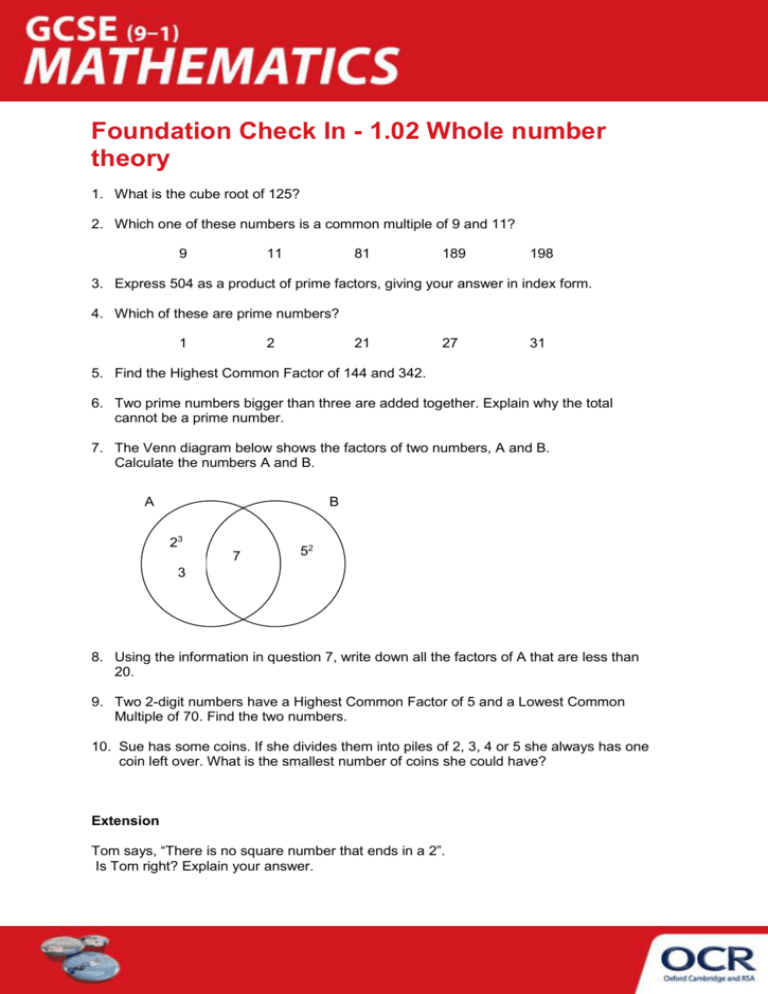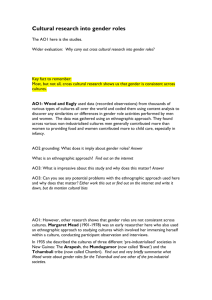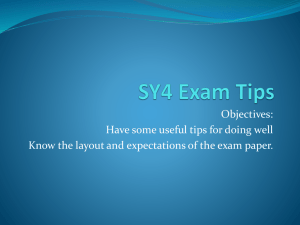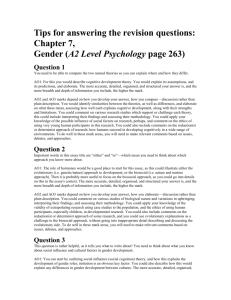Foundation Topic Check In 1.02 - Whole number theory
advertisement

Foundation Check In - 1.02 Whole number theory 1. What is the cube root of 125? 2. Which one of these numbers is a common multiple of 9 and 11? 9 11 81 189 198 3. Express 504 as a product of prime factors, giving your answer in index form. 4. Which of these are prime numbers? 1 2 21 27 31 5. Find the Highest Common Factor of 144 and 342. 6. Two prime numbers bigger than three are added together. Explain why the total cannot be a prime number. 7. The Venn diagram below shows the factors of two numbers, A and B. Calculate the numbers A and B. A B 23 7 52 3 8. Using the information in question 7, write down all the factors of A that are less than 20. 9. Two 2-digit numbers have a Highest Common Factor of 5 and a Lowest Common Multiple of 70. Find the two numbers. 10. Sue has some coins. If she divides them into piles of 2, 3, 4 or 5 she always has one coin left over. What is the smallest number of coins she could have? Extension Tom says, “There is no square number that ends in a 2”. Is Tom right? Explain your answer. Answers 1. 5 2. 198 3. 23 × 32 × 7 4. 2 and 31 5. 18 6. Because all prime numbers bigger than three are odd and when you add two odd numbers together the answer is always even. To be a prime number the answer would have to be odd. 7. A = 168, B = 175 8. 1, 2, 3, 4, 6, 7, 8, 12 and 14 9. 10 and 35 10. 61 Extension Tom is right because when you square the digits 0 to 9, the answer always ends in 0, 1, 4, 5, 6 or 9. We’d like to know your view on the resources we produce. By clicking on ‘Like’ or ‘Dislike’ you can help us to ensure that our resources work for you. When the email template pops up please add additional comments if you wish and then just click ‘Send’. Thank you. If you do not currently offer this OCR qualification but would like to do so, please complete the Expression of Interest Form which can be found here: www.ocr.org.uk/expression-of-interest OCR Resources: the small print OCR’s resources are provided to support the teaching of OCR specifications, but in no way constitute an endorsed teaching method that is required by the Board, and the decision to use them lies with the individual teacher. Whilst every effort is made to ensure the accuracy of the content, OCR cannot be held responsible for any errors or omissions within these resources. © OCR 2015 - This resource may be freely copied and distributed, as long as the OCR logo and this message remain intact and OCR is acknowledged as the originator of this work. OCR acknowledges the use of the following content: n/a Please get in touch if you want to discuss the accessibility of resources we offer to support delivery of our qualifications: resources.feedback@ocr.org.uk Assessment Objective Qu. Topic R A G Assessment Objective Qu. Topic AO1 1 Find the cube root AO1 1 Find the cube root AO1 2 Identify common multiples AO1 2 Identify common multiples AO1 3 Express a number as a product of prime factors using powers AO1 3 Express a number as a product of prime factors using powers AO1 4 Identify primes AO1 4 Identify primes AO1 5 Find the Highest Common Factor AO1 5 Find the Highest Common Factor AO2 6 Apply properties of primes AO2 6 Apply properties of primes AO2 7 Evaluate products of prime factors AO2 7 Evaluate products of prime factors AO2 8 Interpret the product of prime factors AO2 8 Interpret the product of prime factors AO3 9 Solve a problem using the product of prime factors AO3 9 Solve a problem using the product of prime factors AO3 10 Solve a problem involving factors and multiples AO3 10 Solve a problem involving factors and multiples Assessment Qu. Assessment Qu. Objective Topic R A G Objective Topic AO1 1 Find the cube root AO1 1 Find the cube root AO1 2 Identify common multiples AO1 2 Identify common multiples AO1 3 Express a number as a product of prime factors using powers AO1 3 Express a number as a product of prime factors using powers AO1 4 Identify primes AO1 4 Identify primes AO1 5 Find the Highest Common Factor AO1 5 Find the Highest Common Factor AO2 6 Apply properties of primes AO2 6 Apply properties of primes AO2 7 Evaluate products of prime factors AO2 7 Evaluate products of prime factors AO2 8 Interpret the product of prime factors AO2 8 Interpret the product of prime factors AO3 9 Solve a problem using the product of prime factors AO3 9 Solve a problem using the product of prime factors AO3 10 Solve a problem involving factors and multiples AO3 10 Solve a problem involving factors and multiples R A G R A G








